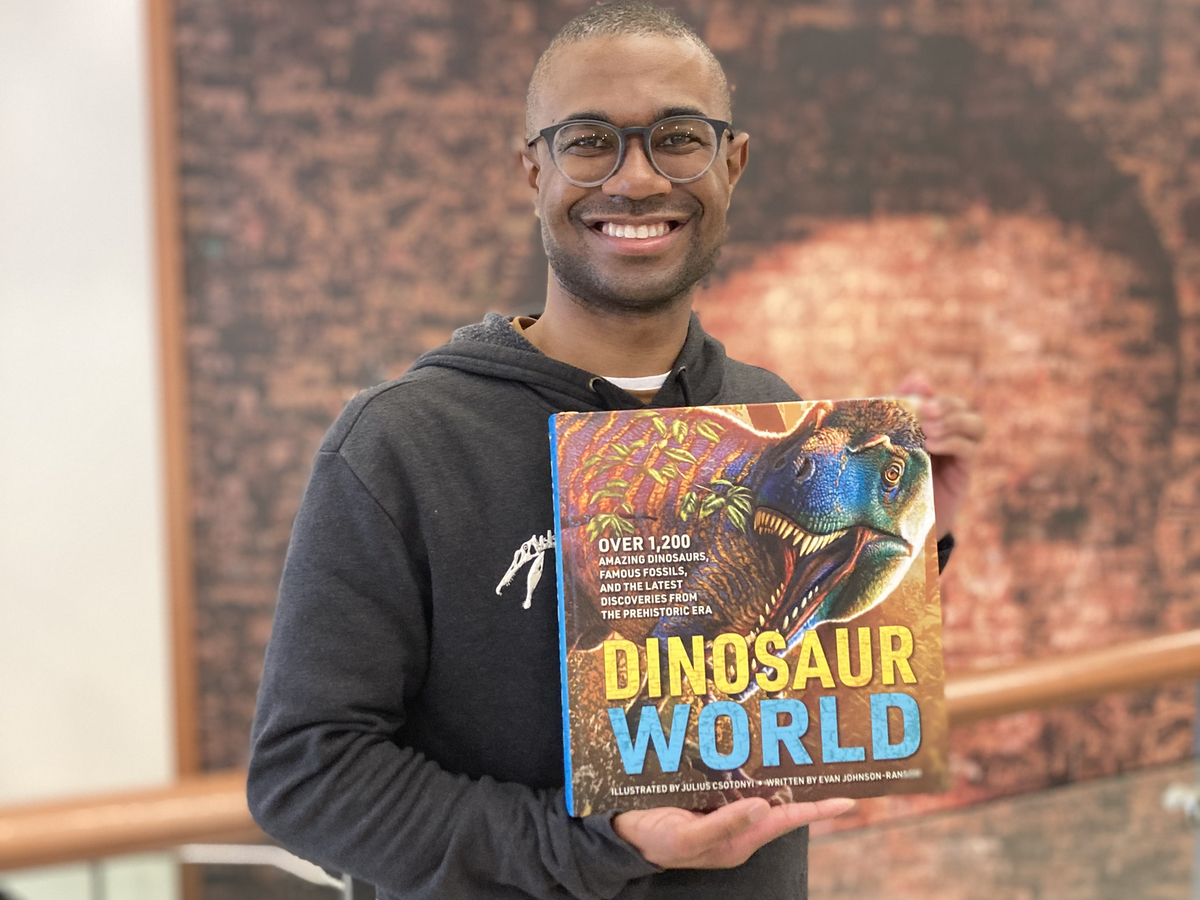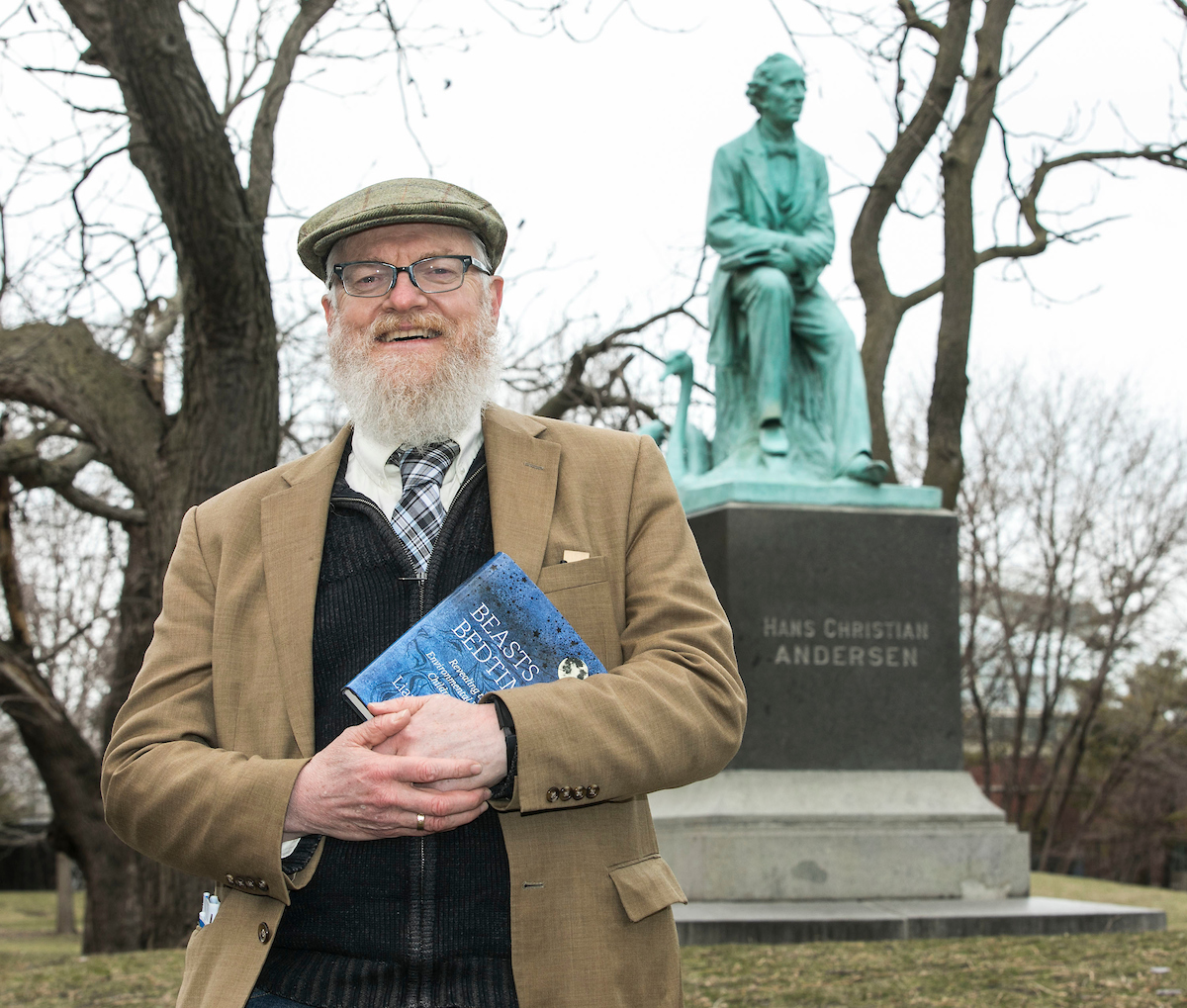 Evan Johnson-Ransom, who graduated from DePaul in 2018 with a B.S. in biology, recently wrote "Dinosaur World," which extensively examines fossil evidence to spark interest in young paleontologists. (Photo courtesy of Kenshu Shimada)
Evan Johnson-Ransom, who graduated from DePaul in 2018 with a B.S. in biology, recently wrote "Dinosaur World," which extensively examines fossil evidence to spark interest in young paleontologists. (Photo courtesy of Kenshu Shimada)
Children are naturally curious about the world around them — they explore, test and, as budding scientists, seek to discover new knowledge.
College of Science and Health faculty and alumni understand that, just as a slight revision on the protein coding of DNA can change the outcome of a disease, one narrative paragraph may change the direction of a child's life.
As they teach and conduct research, Science and Health faculty are dedicated to unlocking the curiosity of students through their passion for these disciplines. Many of these faculty and CSH alumni are also authors and co-authors of children's books, sharing their knowledge and love of science with young readers.
Their accurate and engaging portrayals of scientific concepts, whether it is explaining the life cycle of a butterfly or documenting the process of photosynthesis, convey complex ideas to children simply and relatably.
For example, Evan Johnson-Ransom, who graduated from DePaul in 2018 with a B.S. in biology, published three peer-reviewed papers with his mentor, renowned paleontologist Dr. Kenshu Shimada. Since then, Johnson-Ransom has earned an M.S. from Oklahoma State University and is
currently a Ph.D. student at the University of Chicago. Evan recently
authored "Dinosaur World," which extensively examines fossil evidence to spark interest in young paleontologists. The book uses colorful illustrations and easy-to-understand language to explain adaptations and specializations of each species, along the lines of what he learned in coursework at DePaul. By pointing to specimens in museums around the world, Johnson-Ransom helps young readers understand the anatomy, diet, habitat and fun facts from the fascinating world of dinosaurs.
Liam Heneghan, a DePaul professor of environmental science and studies, has co-authored several children's books on ecology.
"Beasts at Bedtime," for instance, examines the environmental underpinnings of children's stories.
 Liam Heneghan, a DePaul professor of environmental science and studies, has co-authored several children's books, including "Beasts at Bedtime." (DePaul University/Jamie Moncrief)
Liam Heneghan, a DePaul professor of environmental science and studies, has co-authored several children's books, including "Beasts at Bedtime." (DePaul University/Jamie Moncrief)
Heneghan unearths universal insights into our inextricable relationship with nature, which underlies so many classic children's stories, and shows how the nature curriculum is embedded in everything from board books like "The Rainbow Fish" to contemporary young-adult classics like "The Hunger Games." Stories and engaging illustrations help children understand the basic principles of ecosystems and, through demonstrating the relationship between classic children's stories and everyday environmental principles, Heneghan sparks curiosity and excitement in young readers.
In their children's books, these DePaul authors not only share their knowledge and love of science with young readers but also help to inspire the next generation of scientists and researchers. Children exposed to science at a young age are more likely to develop an interest in STEM fields and pursue careers in science, technology, engineering and math.
Dr. Stephanie Dance-Barnes, dean of the College of Science and Health, also contributes to developing young scientists through her co-authorship of
an interactive STEM engagement website for children. Dance-Barnes explains that "connecting children to science with scientists actively working and teaching in the discipline provides an elevated level of insight and rich perspective."
Who knows: One of today's readers may soon become the next author of their own science-focused children's book, continuing the cycle of applied science.
Kurtis Todd is an administrative staff member of the College of Science and Health, as well as the college's director of communications.